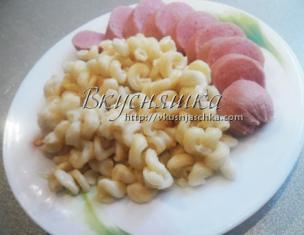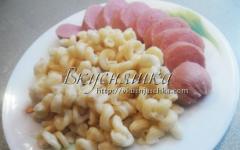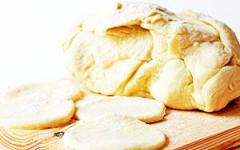Plywood is a universal material widely used in furniture production, repair and construction work. Its popularity is due to its good practical properties along with its low cost.
In this regard, the question arises whether it is necessary to paint plywood. There is only one answer - you need it! After all, paint and varnish materials will not only give the board a finished and neat look, but will also extend its service life, protecting it from moisture and other environmental influences.
It is important to note that plywood can be used both for rough work, as an auxiliary material, and as an interior decoration if used as a floor covering. The main thing is to properly prepare the material and decide how to paint the plywood on the floor.
The quality of painting, as well as the durability of the coating, depends on how carefully the board is processed before applying paints and varnishes.
Therefore, preparation consists of the following stages:
- Drying. Once saturated with moisture, plywood can change in volume and shape. Therefore, first of all, it must be thoroughly dried. To do this, it is not necessary to use special equipment - just lay the sheets out in a warm place for up to 7 days.
- Grinding. This process allows you to achieve the most even surface of the slab. After all, plywood itself has a heterogeneous structure with a large number of protrusions and irregularities. An electric grinder will help you achieve better results and make your work much easier. The movements should be directed first perpendicular to the textured pattern, and then along.

Sanding plywood
- Primer. Using an alkyd primer to treat plywood helps prevent the appearance of fungus and mold. It is especially important to take care of a high-quality primer if the plywood will be used in conditions of high humidity or for exterior finishing of a room. Before applying the primer, the surface must be cleaned of any remaining dust using a soft brush, a rag, or even better, a vacuum cleaner.
- Putty. After the primer has dried, it is necessary to cover the plywood sheet with a layer of putty. It will allow you to hide irregularities or cracks that are invariably present on the surface of the plywood. At this stage, we must not forget about processing the joining seams.
- Sanding. After the putty has dried, take coarse sandpaper No. 80-120 and smooth the surface.
- Application of acrylic primer. This is an important stage in the preliminary preparation of the slab. The special composition reduces the porosity of plywood, increases adhesive properties and serves as additional protection against moisture and mechanical damage.
This is all that is needed at the preparatory stage. When the top layer of primer has completely hardened, you can begin painting.
Of course, you can skip some steps, using only a primer and then paint right away. But this can only be done by assessing the quality of the slab itself, as well as determining the purpose of its use.
Important! If plywood sheets are painted before installation, they must be treated on all sides, including the ends. These places are the most vulnerable to moisture.
Watch the video on how to paint plywood:
Which paint to choose
The paints used to coat plywood vary depending on the substance from which they are made:
- Alkyd paints. A strong and durable coating reliably protects wood material from moisture or mechanical damage. The disadvantage of alkyd paints is their composition, which cannot be called environmentally friendly. The presence of turpentine or drying oil gives paintwork a pungent odor. Therefore, they are best used for external use.
- Water-dispersed. Eco-friendly material that is diluted with water. After drying, they form a thin but durable film on the surface. This type includes water-based, silicate, and acrylic paints. This coating is more suitable for indoor use.
The most popular material for painting plywood is acrylic paint. This is due to ease of application and quick drying. In addition, it has virtually no odor, so it can easily be used indoors.
Many manufacturers offer plywood that is ready for installation - sanded, primed and even painted. In this case, you won’t even have to think about how to paint the plywood. But such material costs much more than unprocessed material.

Colored plywood sheets
Advice! You can purchase a white base and give it the desired color yourself using dye, or choose ready-made colored paint.
Tools for painting plywood
To paint plywood you will need a sprayer, roller or brush. The choice of tool depends on the area of the surface being processed and the presence of small elements.
The sprayer gives the fastest and highest quality results. Thanks to a special application technique, plywood paint spreads evenly onto the surface to be painted. But such equipment has one big drawback - high cost. Therefore, it may be more advisable to use a lint-free foam roller. Some hard-to-reach areas can be painted with a brush.

Painting plywood with a roller
If painting in several different colors is intended, then masking tape is used for an aesthetic and neat design.
Features of paint application
Before painting plywood indoors, all furniture or floor coverings should be covered with film so as not to be damaged by the paint.
Using the selected tool, the coloring matter is applied in an even layer to the surface to be treated. The direction of movement must coincide with the direction of the wood fibers.

Painting with a wide brush
Do not apply too thick a layer of paint, otherwise drips and sagging will appear on the surface. Therefore, if there is a need for a thicker coating, then it is better to apply several thin layers of paint, waiting for each of them to dry completely.
Advice! If the plywood will be used in a damp room or outdoors, it is advisable to cover it with several layers of paint on all sides.
Varnishing plywood
You can choose another method of decorative finishing of slabs, using varnish instead of paint. In this case, you also cannot do without preliminary surface preparation, because all imperfections will be visible under the transparent varnish.
First, the sheet of plywood needs to be cleaned using fine-grained sandpaper. After this, clean the surface from dust and dirt and degrease.
Now you can apply the varnish. It is applied in several layers:
- after the first layer has dried, it is necessary to remove small fibers by sanding;
- the second layer will make the surface matte;
- the third layer will give the slab a noble shine.
The final coat of varnish is best applied using a sprayer to ensure even coverage. If such equipment is not available, you can use a foam roller or a wide brush.

Applying varnish
Varnish can be used not only as an independent coating, but also as a finishing touch after applying paint. This will make the colored surface bright and shiny. For the same purposes, you can use glossy enamel.
Decorative coating will allow you to achieve an aesthetic appearance of such a simple material as plywood. At the same time, treatment with special means gives the slabs increased resistance to environmental influences.
In the process of making various plywood products with your own hands, the question often arises of how to paint plywood. Despite its apparent simplicity, this process has its own nuances associated with the characteristics of the material. So, let's look at the painting stages in detail.
Drying
This step is mandatory if the sheets of material were in a damp room or outdoors. Moisture under the paint layer can cause the sheet to warp, which is unlikely to have a positive effect on the appearance and quality of the finished product.
This is not difficult to do - just place the sheets of plywood in a dry room at room temperature for two to three days. Advice: it is advisable to dry it in the same room where the subsequent painting will be done. When temperature and humidity change, condensation may form on the surface of the sheet, which will negate all efforts.
If you have a large amount of work to do, you can lay the sheets on the floor and sand them with a special machine.

After drying, it is necessary to sand with sandpaper - this will improve the adhesion (adhesion) of the plywood to the paint. Grinding is carried out in two, less often in three stages, each time reducing the grain size of the sandpaper. Upon completion, be sure to thoroughly clean the surface of sawdust.
When working with thick material, it may be necessary to plan the edges of the sheet, after which the edge should be carefully “sanded” in two or three stages.
Primer
Anyone who has had to deal with painting anything knows that in this matter you cannot do without a primer. Primer, like sanding, increases adhesion, and in addition increases resistance to aggressive environmental factors, prevents cracking and delamination (which is all the more useful for layered materials).
Alkyd-based primer is usually used to prime plywood. The primer is applied with a special roller of high hairiness, after which the sheets are left to dry. When the primer is dry, you can start painting.
Painting
Now we have reached the main stage of the entire event. First, just a few words about tools. Plywood is painted using a roller. The edges, especially curly, irregularly shaped ones, are painted with a brush. To paint large areas, you can use a spray bottle. This is especially convenient if you need to paint the plywood on the ceiling without dismantling the structure.

More details should be said about paint. To the question of what paint to paint plywood with, there are two main answers:
- acrylic paint;
- water-based paint.
Each of these options has its own characteristics, advantages and disadvantages. Thus, acrylic paint has virtually no odor, dries very quickly, has increased durability and “holds” moisture well. However, the price of such paint is also high. Therefore, it makes sense to use acrylic only for structures that will be located outdoors or experience constant physical impact (for example, steps). In all other cases, a regular, cheaper emulsion is perfect.

Advice: if the structure will be located outdoors, painting should be done in several layers. In this case, only the topmost finishing layer can be made with acrylic.
Opening with varnish is not much different from painting, but it imposes more stringent requirements for surface preparation, because all defects will not be hidden under a layer of paint, but are preserved forever with transparent varnish. In this case, it is better to use a lint-free foam roller.

We paint it antique
If you assembled plywood furniture with your own hands, you can make your creation look like an antique made from solid wood. For this purpose, a special painting method is used, called “wood-like” or “antique” (see photo). To do this, you will need two types of paint of the same color (white can be), but different in tone, as well as a transparent varnish. Let's get started:
- We sand and prime the plywood as for regular painting.
- Apply paint of a darker tone.
- After drying, apply light paint.
- When the light paint has dried, sand the surface with coarse sandpaper. Let's sand the edges especially hard. A dark layer protruding from under the light one will create the effect of wear and tear characteristic of old furniture.
- We fix the effect with transparent varnish.
As you can see, there is nothing complicated about painting plywood. Experiment with colors and materials, and our lights will help you with this! We also recommend watching an interesting video.
Painting plywood is a simple matter. In theory. However, there are a number of nuances that need to be taken into account so that the end result pleases you for as long as possible. The painting features are caused primarily by the structure of the plywood. After all, this is a multi-layer material made of natural wood. The ability of wood to shrink and expand under the influence of factors such as humidity and temperature leads to the fact that the coating applied to it will also be deformed.
So, we suggest you figure it out how to paint plywood Right.
Plywood selection |
The procedure for its further decoration depends on the choice of plywood. There are several options here:
- you buy plywood to paint on one side. Then varieties II/III, II/IV will suit you. It is important that the side to be painted is not lower than second grade;
- you need double sided painting plywood. You should buy material of grade no lower than II/II. That is, both sides must be distinguished by high quality processing;
- you want to preserve the appearance of the wood. Then, elite and I/I varieties , І/ІІ , I/III - exactly what you need. After all, they have the minimum permissible number of defects. A varnished plywood will allow you to emphasize the aesthetic qualities of natural wood.
Drying
Let's assume that you just purchased plywood. It was stored in the warehouse under optimal conditions - however, it needs to be kept in the room where it will be painted. If the plywood was stored outside and exposed to direct water, it is better to dry it with a hair dryer (one or two sheets). Or lay it on the floor on bars to ensure air circulation.
Thus, it does not matter at all where the plywood was stored - it will need to be dried in any case. The difference will only be in the duration of this process.
Please note that you will need to dry the sheet after completing each of the steps.
If you have high grade plywood, there is no need to sand it. If below the second, then use sandpaper No. 80. You need to sand perpendicular to the wood grain.
Corners definitely need to be processed. To do this, they also need to be sanded with coarse sandpaper.
Putty is only needed if you need to level the surface of the sheet. For example, you developed a defect while working with plywood. You need to hide the nails and fasteners. Or you purchased products lower than second grade. Typically putty plywood for wallpaper.
In general, the quality of a sheet of any grade will not be visible only if plywood for painting will be additionally treated with putty and sanding.
|
Primer |
The primer involves covering the sheet with a special composition. Usually this is a simple drying oil. But other solutions can also be used, for example, pore fillers. Its use serves the following purposes:
- extend the service life of plywood products;
- protect them from damage;
- prevent the development of fungi and blue stains;
- ensure better adhesion of paint to veneer.
The primer is applied with a brush or sprayer. Application of the primer coating is carried out with a brush or spray. The pore filler is applied using foam rubber.
Decorative coating. Choice
The preparatory work is left behind - now it’s time to give the product a finished look. Depending on your wishes and the quality of the surface, several options are possible to resolve the issue, how to paint plywood:
- staining;
- staining followed by varnishing;
- varnishing while preserving the natural appearance of the veneer;
- applying paint.
Please note that not only the sheet is coated, but also the ends.
Decorative coating. Implementation
Staining. This procedure will allow the plywood to acquire the color that you need. Allows you to achieve the effect of using valuable and rare wood species. There are a significant number of different colors on the market. In addition, stain also acts as an antiseptic.
|
Decorative coating |
Plywood, opened with stain, has a matte appearance, so it is often additionally coated with varnish.
Stain coated with varnish. Gives the surface additional shine.
Varnishing. The varnished surface looks very beautiful. The naturalness of wood, emphasized by high-quality processing and coating, is always in fashion, always relevant. In this way, you can give a noble look even to such a very technical material as plywood.
Coloring
This point will perhaps raise the most questions precisely because plywood painting is the most common method of decorating it. What paint is best to paint plywood? Let's consider several options:
- water-based plywood paint - acrylic. Their advantage is that they have almost no odor, are easy to apply and dry quickly;
- Painting plywood with enamel is used most often in exterior work, since enamel better protects veneer from external influences. But it is also quite acceptable for interior work. For example, painting a plywood floor is done using enamel.
Step 8 - Selecting a Tool
Having decided on the type of painting, you need to choose the optimal method of applying paint or varnish. You can use:
- a brush or brush (if you are painting a large area);
- roller It is better not to use a fur roller. After all, when painting, it is important that the pile does not fall out. It is better to use a foam roller;
- spray.
Conclusion
We hope that the information provided here will help you decide what is the best way to paint plywood? to give it decorative properties, as well as to increase its service life.
750 rub.
RUB 1,900
800 rub
990 rub.
RUB 1,400
700 rub
980 rub.
550 rub.
3,000 rub.
RUB 1,400
The question of how, and most importantly, with what to paint plywood on the floor, is very relevant these days. Plywood is a material with excellent characteristics that has a fairly wide range of applications.
It is made from fairly thin sheets of veneer, glued with adhesives of different compositions. Such a property of this material as moisture resistance and, accordingly, the brand directly depend on the composition of the glue used.

Surface preparation technology
In order to extend the service life of the material, it will need to be coated with acrylic paint.
The plywood processing process is divided into the following stages:
- grinding process;
- priming work;
- drying;
- puttying followed by drying;
- grinding robots;
- priming work followed by drying;
- coloring.
Primer
Detailed instructions:
- In order to prevent the possibility of contamination of the material by fungal bacteria, as well as swelling under the influence of moisture, it is primed using alkyd material;
- The primer should be applied with a special roller;
- Then the surface is coated with paint (acrylic or alkyd).
Note! In the case where the manifestation of the relief structure does not interfere or is even desirable, the painting process can be reduced into several stages. Since only one coat of primer and one coat of paint will be sufficient.
Grinding work
Grinding is carried out manually or using a special electric grinder:

- using coarse sandpaper No. 80 - 100, the surface is sanded perpendicular to the direction of its texture;
- then fine-grained paper is used to achieve ideal evenness, which is needed for subsequent varnishing;
- After grinding work, you will need to remove any existing irregularities.
In this way, a surface can be obtained that is ready for further processing.
Edge processing
You will need to plan the edges of the building material from edge to center, and then sand and cover the ends with acrylic paint with additives in two or three layers. 
Primer and putty work
Acrylic primer is applied to the sanded surface.
This stage of work is necessary:
- for leveling a wooden surface (see also article);
- to close all existing cracks on the inner surface;
- to increase service life and protect against mechanical damage.
Dyeing technique
Now let's move on to coloring. If you are thinking about how to paint plywood to look like wood, it will largely depend on its purpose. Coating the plywood with a layer of paint will significantly protect it from moisture. 
Note! To make the use of the material in rooms with high humidity or even outdoors possible, the sheets are covered on all sides and along the edges with several layers of paint.
Varnishing plywood
Plywood can also be varnished:
- To begin with, the surface is sanded with fine-grained sandpaper.
Note! Dust generated during the work must be carefully removed. And then coat the plywood with varnish.
- then paint is applied;
- When the paint is dry, varnish is applied to add additional shine. If you use glossy paint, you don’t need to use varnish.
Plywood painting tool
You can paint plywood using:
- sprayer;
- roller;
- tassels.
If you use a sprayer, you can achieve a better result, since the coloring liquid spreads evenly on the surface. However, the price of such a tool can be quite high, so you can use a standard lint-free foam roller. And paint hard-to-reach places with a brush.

You may also need masking tape if you plan to use multiple colors when painting the plywood. To avoid staining the room, it is recommended to cover the floor and existing furniture with film.
Paint for plywood
Acrylic paint can be such a coating, since it:
- dries quickly;
- almost odorless;
- and applies beautifully.

If plywood is used outdoors, you can limit yourself to ordinary enamel for wooden products. This material is also called pentaphthalic paint. It is easy to apply.
You can purchase this paint in a ready-made color, or you can color it yourself.
But before this you need to make sure that the plywood boards are completely dry. If they were stored in a room with high humidity, they will need to be dried.
Types of varnishes for plywood
All varnishes available for sale on the domestic market are divided into two groups, which differ in the way the layer is developed:
- The layer is formed due to the weathering of the solvent. These are varnishes made on an alcohol or nitrocellulose base;

- The layer is formed through the process of polymerization and polycondensation. Thanks to this, the varnish layer hardens. These are varnishes made on oil, urea-formaldehyde, polyester and polyurethane bases.
Conclusion
We hope that this information will be useful for you and that you will be able to independently choose the appropriate paint and paint it yourself.
In the video presented in this article you will find additional information on this topic.
Similar materials






Painting plywood is considered a necessary measure to protect the material from excessive moisture or other harmful environmental influences.
Currently, plywood is still often used in construction, especially private construction. It is made from thin sheets of veneer, which are glued together with adhesives of various compositions. It is used for the production of furniture, wall coverings, floors, as well as finishing the facades of buildings.
Why is plywood so popular? Durability and environmental friendliness are the main advantages of this type of building materials.
But it’s not enough to just purchase plywood and use it in its pure form for your needs. It is necessary to apply a number of measures thanks to which the plywood board can last a long time. And one of these measures is painting.
Let's look at each stage of painting plywood in more detail.
Paint selection
Paint for plywood is selected based on the conditions in which the sheets are intended to be used.
Water-based acrylic paint
If the building material will be installed in a residential building (apartment), then you can take a closer look at water-based paints, which are suitable for interior decoration.
The use of acrylic paint is widespread: it is environmentally friendly, easy to handle, quite durable, and also allows the use of a wide range of shades. The paint is applied to the plywood in two layers, and both sides and ends are treated. If there is no active mechanical impact on the sheets, then the choice can be made in favor of conventional water-based paint.
Facade paint
Pentaphthalic enamel is perfect for finishing facades. It is attractive not only for its low cost, but also for its durability. This type of paint, like acrylic, dries quickly. However, this type has a small disadvantage in the form of a specific odor, which, in fact, should not become an obstacle for external use.
In general, you can choose any paint suitable for wooden surfaces.
Processing plywood before painting
Before painting, plywood must be completely cleaned of dust and small sawdust. Plywood sheets should be painted along the wood grain.
Do not forget that before preparing plywood for painting and staining, the sheet must dry thoroughly. Everyone knows the property of this material - to warp. You can avoid the risk of deformation by simply keeping the sheets in a dry room at room temperature for 3-4 days. This is especially true if the material was stored on the street or in a damp construction warehouse. Experts recommend not neglecting this stage and keeping the material for several days in the room where you then plan to paint it.
Initially, the sheet must be sanded to remove any irregularities. This stage can only be avoided if you purchase high-grade material. It's already quite high quality. For cheap varieties, sanding is highly desirable.
First, use coarse-grained sandpaper (No. 80-100), and then use medium-grained sandpaper (No. 100-120). This improves the subsequent adhesion of the surface to the paint. Do not forget to process the edges of the sheets; if they are too rough, they can be lightly planed and then sanded.
If you need to hide joints, fasteners or very noticeable defects, use putty. This material will also be useful to you if you decide to glue wallpaper onto plywood. Don't forget to sand the putty areas
After grinding is completed, the surface must be primed; most often, drying oil, primers with an alkyd base, or special compounds that fill the pores of the material are used for this.
What is a primer used for?
If finishing with plywood sheets is done indoors, then due to fluctuations in temperature and humidity, the wood texture may change: shrink and expand. The primer as an intermediate layer will not allow the applied paint to crack and will protect the base from moisture penetration and the formation of fungus. The primer is applied with a roller.
It is necessary to allow the soil to dry, and then additionally treat the plywood with antiseptics and fire retardants, which will enhance protection against fire and prevent blue stains from appearing. This is one of the important elements of the preparation process if you are going to paint plywood with transparent paint that has low resistance to bioaggressive manifestations.

How to paint plywood
Painting plywood correctly is not difficult. We have already talked about applying paint according to the arrangement of the fibers. You can also take a completely traditional tool: a roller, sprayer or paint brush.
Let's consider in which case it is more appropriate to choose each of these options:
- Spray
Ideal for saving time and large amounts of space, such as floors, ceilings, facades;
- Roller
Convenient for painting medium-sized areas, such as a plywood cabinet, for example. As for the material of the roller coat, it is better to choose foam rubber for plywood;
- Paint brush
A universal tool that can be found in every home. Ideally paints hard-to-reach places (corners), ends and shaped elements.
Coloring
The layer is applied evenly to the surface, and it should be thin. Otherwise, you risk getting smudges, which will undoubtedly spoil the appearance. In addition, a thin coating gives the paint a richer color.
It is better to apply the paint in two successive layers. It is important to remember that the second one is always applied after the first one has completely dried.
Applying varnish
Sometimes varnish is used instead of paint. The plywood is first cleaned and sanded using sandpaper or a sanding machine, then it must be cleaned of any accumulated dust and degreased. Otherwise, all dirt will be visible under the varnish.
After applying the first layer of varnish, let it dry. Sand the first layer and then cover the surface with another layer. As a result of this approach, varnished plywood becomes matte.
If you want to get a glossy surface, you need to apply another layer of varnish on top. This time it is advisable to apply it using a sprayer to evenly distribute the varnish composition.
The nuances of painting white
To paint white or any other light color, you should add similar dyes to the primer, thereby achieving the required color concentration.
Wood painting
To paint plywood to look like wood, you can use different shades of stain. If you need a glossy surface, apply an additional layer of varnish on top.











